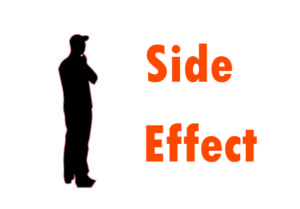
Electrolysis hair removal is recommended and approved for permanent hair removal while a laser is recommended for permanent hair reduction.
When performed correctly, both procedures can be effective for the procedure.
In fact, laser hair removal has been found to be almost permanent in some patients.
The effectiveness of the laser procedure as a permanent hair removal option is limited to dark black or brown hair with more pigment and is also accompanied with re-growth over a long period of time and regular maintenance may be required.
Note: (LHR) Laser Hair Removal
A laser does not work well with blonde or grey hair but electrolysis does.
Electrolysis is the only permanent hair removal procedure with negligible hair re-growth. The procedure is somewhat painful and slow but it can be used on anyone looking to permanently remove hair regardless of their skin or hair color.

Duration and the Number of Sessions Needed
Laser hair removal targets a large area and is thus faster than electrolysis that targets one hair at a time.
The laser procedure is up to 60 times faster and less painful than electrolysis with an average clearance of 74% in 6 months compared to 35% by electrolysis.
The number of sessions needed is also less than those needed for electrolysis procedure on any body part.
Electrolysis is recommended for removing hair in smaller areas of the body while the laser is less expensive and faster when removing hair in larger areas of the body.
Consider electrolysis of facial hair removal, especially areas near the eye- for safety reasons as a laser can damage your vision.
 Skin and Hair Colour
Skin and Hair ColourThe type and color of hair is a determining factor when choosing the two procedures. Electrolysis is effective in all skin and hair color.
However, laser targets the dark color (pigment) and works best on those with dark black or brown hair.
While those with blonde, grey or white hair will need electrolysis procedure.
The cost of each laser treatment is £200-£900 depending on the body area, while one electrolysis session will cost you about £45.
The cost per session may seem expensive but considering you will need more session for electrolysis,
the cost of laser treatment will be less over a period of years.
 Side Effects
Side EffectsBoth procedures are safe with minimal side effects if carried out by professionals.
However, some of the side effects associated with laser treatment include hypopigmentation and permanent pigment in rare cases.
Electrolysis may cause skin scarring and be pitting when done incorrectly and thus not recommended for facial permanent hair removal.

Electrolysis being an intrusive procedure that removes one hair at a time is more painful than laser which targets the pigment.
Laser uses light energy to destroy hair follicles on a large area while electrolysis uses a needle inserted to each hair follicle to destroy a single hair.
Unfortunately, both procedures are not pain-free with stinging like pains felt during laser procedure.
But the pain felt during laser procedure is negligible and less than that felt during electrolysis.

Laser hair removal is a new technique that is less expensive and requires less time. Studies are being carried out to make it effective as a permanent hair removal for people of all skin and hair color.
Some of the advancements in laser technique include the use of radio frequency to suit those not in the dark and light skin profile.
In most cases, Laser is superior to electrolysis and the procedure takes less time and covers large body area. On the other hand, electrolysis procedure treats one hair at a time and thus the procedure takes more time and is more painful.
For now, the alternative is using electrolysis if you have dark and light skin or need a permanent hair removal with the pain and extra cost notwithstanding!